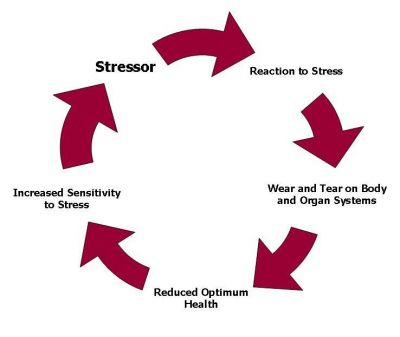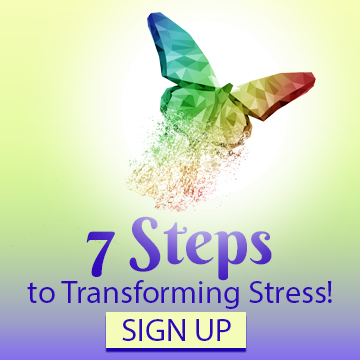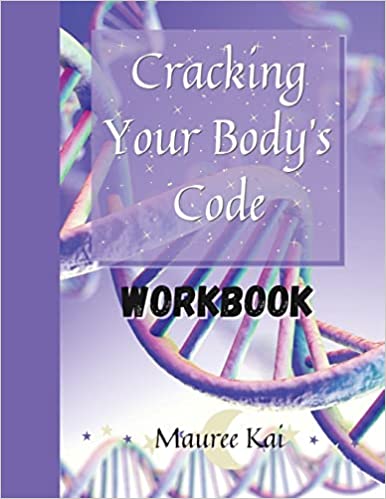Stress is an unavoidable part of our daily lives. Bills come every month, kids’ activities are year-round, and work never seems to slow down. A little bit of stress is inevitable, but oftentimes that’s a good thing.
Stress helps you meet your daily challenges and motivates you to reach your goals, ultimately making you a smarter, happier and healthier person. That’s right. Good stress is vital for a healthy life.
The word stress is thrown around a lot with negative connotations. You may think any type of stress is bad, but that isn’t true. There is positive stress, the type of stress you feel when you’re excited or starting something new and different. Your pulse quickens and your hormones surge, but there is no threat or fear. It is the anticipation of the new or unknown as you step out of your comfort zone.
You might feel this type of stress when you ride a roller coaster, compete in a sport, start a new job, move to a new place, or go on a first date. Good stress is short-term and it inspires and motivates you to do your best, bring more focus to your energy and enhancing performance.
Bad stress, however, is the kind that wears you out, leaves you jittery, irritable, and is harmful to your health. Bad stress, or distress, can lead to anxiety, confusion, poor concentration, low energy, feeling overwhelmed, and decreased performance.
Bad stress can be short-term (acute) or long-term (chronic). Acute stress doesn’t take a heavy toll on your body if you can find ways to relax and decompress. However, chronic stress, when you repeatedly react to real or perceived stressors, can take a heavy toll on your body and can cause negative health effects. Chronic stress can cause headaches, insomnia, weight gain, poor memory, anxiety, pain, high blood pressure, metabolic syndrome, depression, and heart disease to name a few.
When someone perceives a situation to be challenging, threatening, or uncontrollable, the brain initiates a cascade of events involving the hypothalamic-pituitary-adrenal (HPA) axis, which is the primary driver of the endocrine stress response. This ultimately results in an increase in the production of steroid hormones called glucocorticoids, which include cortisol, often referred to as the “stress hormone”.
The HPA axis
During times of stress, the hypothalamus, a collection of nuclei that connects the brain and the endocrine system, signals the pituitary gland to produce a hormone, which in turn signals the adrenal glands, located above the kidneys, to increase the production of cortisol. Cortisol increases the level of energy fuel available by mobilizing glucose and fatty acids from the liver. Cortisol is normally produced in varying levels throughout the day, typically increasing in concentration upon awakening and slowly declining throughout the day, providing a daily cycle of energy. During a stressful event, an increase in cortisol can provide the energy required to deal with prolonged or extreme challenge.
Glucocorticoids, including cortisol, are important for regulating the immune system and reducing inflammation. While this is valuable during stressful or threatening situations where injury might result in increased immune system activation, chronic stress can result in impaired communication between the immune system and the HPA axis. This impaired communication has been linked to the future development of numerous physical and mental health conditions, including chronic fatigue, metabolic disorders (e.g., diabetes, obesity), depression, and immune disorders.
Staying stuck in a stress cycle for too long can cause a dysregulated stress response. It creates changes in the physiology that affect nearly every system in the body, influencing how people feel and behave. The result is psychological and physiological disorders affecting mental and physical health that will reduce the quality of life.
The solution is to learn how to free yourself from getting stuck in the cycle of chronic stress. First and foremost is to learn how to take a step back and formulate a response to a stressful situation rather than becoming reactive. Next is to learn how to “see” things differently. If something is always pushing your buttons, that is a good sign you need to reassess how you look at things. When you change how you see something in your world, your world takes on a different perspective. We give meaning to everything we see, so when we change the way we see things, we change our response to it.
Some simple ways to free yourself from the chronic stress response:
- Practice deep breathing
- Go for a walk, swim, or bike out in nature
- Laugh more – watch a comedy
- Give and receive hugs or physical affection
- Have a creative hobby
- Get adequate sleep
- Create more work/life balance
If you are struggling with chronic stress and physical repercussions, please reach out to me. Medication may give you short term relief, but the goal is to learn how to better manage stress. I can help you make the changes you need to restore balance physically and mentally.



